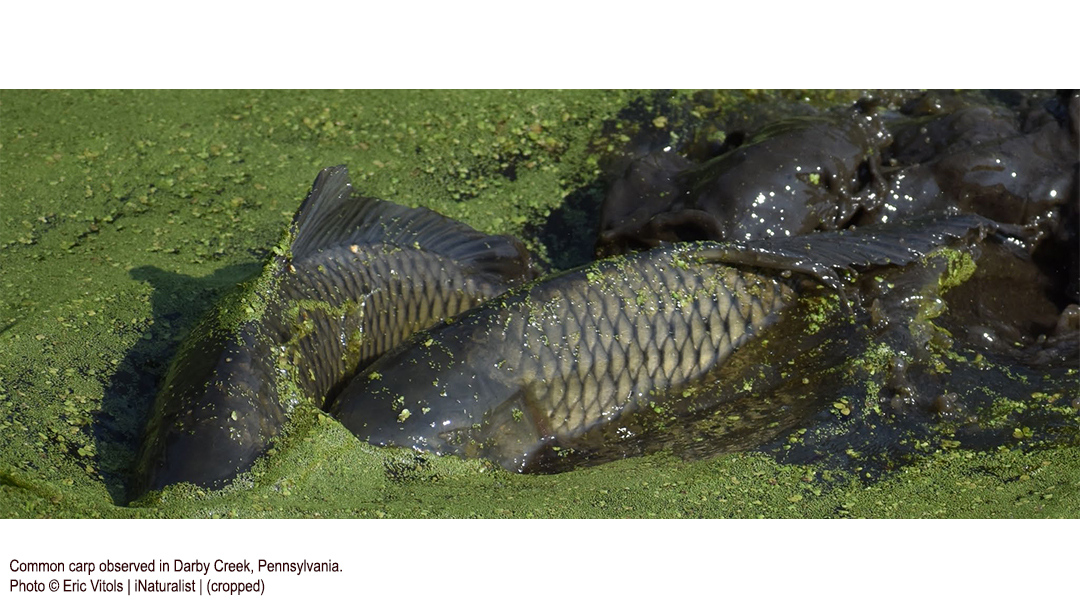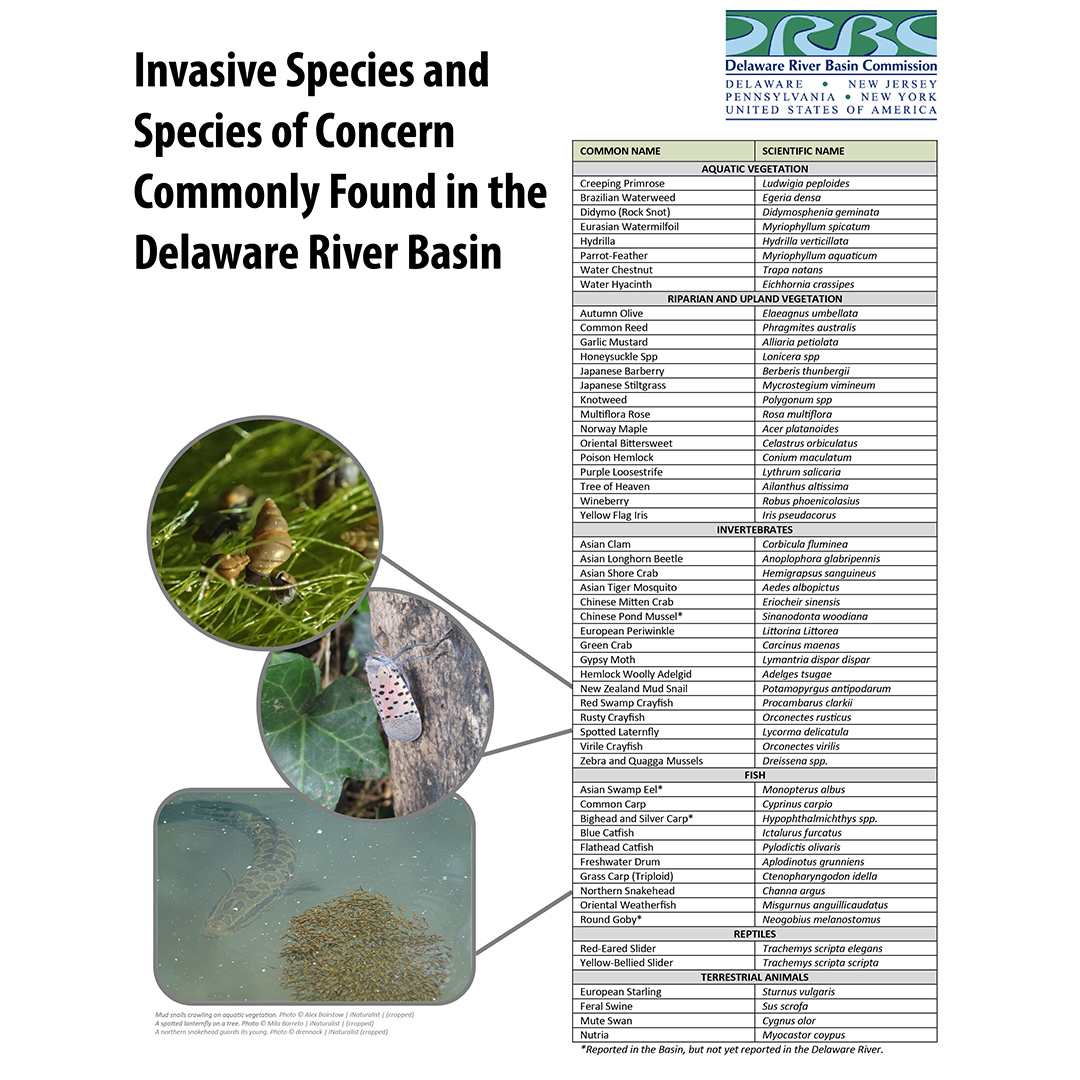Delaware • New Jersey • Pennsylvania
New York • United States of America
 |
Invasive species are animals, plants or other organisms introduced (intentionally or accidently) into habitats outside their natural environment. Their introduction into new habitats is currently one of the greatest impacts to biodiversity and species extirpation, particularly for ecosystems that have been weakened by pollution and habitat fragmentation.
Invasive species can outcompete or predate on native species, generally resulting in detrimental ecological, socioeconomical and in more severe situations, human health impacts.
Presently, horticulture is one of the most common reasons for the introduction of a new species. Other species are generally introduced through means of farming, hunting, fishing or even as new exotic pets. Transportation of invasive species is not always intentional, for example, some species have been introduced merely by accident such as boaters inadvertently transporting them through bait buckets, live wells or in ballast water.
Present Staus in the DRB
The Delaware River Basin offers a diverse number of habitats for invasive species to occupy. Below is a list of some of the many invasive species of concern currently found in the Delaware River Basin. It is important for governments and non-profits in the Basin to work together to implement management and eradication strategies for invasives, as well as communicate to the public about the concern for invasive species and the importance of preserving our native species.
Examples of Invasive Species in the DRB
Check out these links for more info:
- Delaware: Invasive Species
- Delaware: Invasive Fish in Delaware Storymap
- Delaware Currents: "Invasive fish in Delaware River poses growing threat, officials warn" (Nov. 23, 2023)
- National Invasive Species Awareness Week
- National Park Service Upper Delaware: Non-Native Species
- New Jersey Fish & Wildlife: Aquatic Invasive Species
- New Jersey Spotlight: "Invasive blue catfish threaten marine ecosystems in Delaware River Watershed" (Jan. 2, 2024)
- New York: Invasive Species
- North American Invasive Species Management Association
- PA Dept. of Agriculture: Invasive Species of Concern for Pennsylvania
- PA Dept. of Conservation and Natural Resources: Invasive Plant Fact Sheets
- PA Fish and Boat Commission: Aquatic Invasive Species
- Penn State Extension: Invasive & Competing Plants
- USDA National Invasive Species Information Center
Copyright © Delaware River Basin Commission,
P.O. Box 7360, West Trenton, NJ 08628-0360
Phone (609)883-9500; Fax (609)883-9522
Thanks to NJ for hosting the DRBC website
